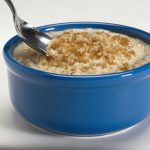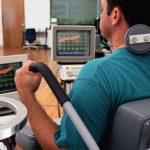
Want to add pizzazz to your morning bowl of oats? Here’s how to spice things up and boost the nutrition. Oats are rich in important minerals like manganese, which plays a role in controlling blood sugar. They also happen to be very high in fiber, important for gut and heart health. Nuts and seeds are great toppings for oats that you might be enjoying already. But adding fruit and spices boosts the antioxidant level of your breakfast with very few extra calories. The following recipe hits the mark on many counts. It includes turmeric, a healing spice with thousands of medical studies behind it. Turmeric also tastes great when combined with fruit, so this recipe includes mango, rich in vitamins A and C, among others. Black pepper adds a pinch of heat and helps turbo-charge turmeric’s healing properties. Like turmeric, cinnamon is full of antibacterial compounds and has a naturally sweet flavor. Coconut is high in fiber and its fats help curb hunger. Mango-Coconut Oats 1 cup rolled oats 1-3/4 cups unsweetened coconut milk 1 cup diced mango 1/2 teaspoon ground turmeric 1/2 teaspoon ground cinnamon 1/4 teaspoon freshly ground black pepper 4 tablespoons shredded coconut Place oats in a small saucepan with the coconut milk. Bring to a simmer over medium heat, cover and cook 8 to 10 minutes. While the oats cook, make… read on >














